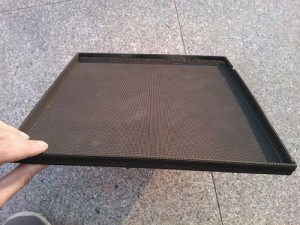
Role of Woven wire mesh screens in heat exchangers
Metal wire mesh screens are open cell structures with low weight and density, high permeability, and high thermal conductivity which make them suitable for use in diverse industrial applications including fluid flow and heat transfer. In this article, the effect of natural convection, radiation and heat flow improvement of metal wire mesh of heat exchangers were evaluated and compared for different heat exchanger orientation, coolant flow rate and service temperature.
Thermal spray coatings were also performed on high temperature stainless steel heat exchangers. These wire mesh heat exchangers were modeled by connecting the tube to the wire mesh by using wire arc thermal spray coating. Thermal spray coating offered suitable connections between the wire mesh and tubes and can replace costly brazing or different metal connection methods.
Why need Inconel mesh screens?
Several billion cubic feet of gas are burned and released daily during oil and gas processes. Gas flares can remove waste gases like methane which cannot be used or moved. Sufficient of air should be provided to completely burn the fuel. The products of complete combustion are not as detrimental to air quality and do not add to global warming as occurred with hydrocarbon gases. Heat of combustion can be reclaimed from the combustion gases by using heat exchangers for different commercial or industrial operations.
There are several improvements made in improving the efficiency of combustion and obtaining air fuel ratio (AFR). There are several incinerator columns that can burn the waste gases cleanly with above 99% efficiency, however there is no recovery system to use that heat. Installation of heat exchanger on the hot gas stack allows trapping the heat of combustion. Although, it is challenging to produce heat exchangers that can withstand hot temperatures and have sufficient potential to make them commercially feasible. Waste gases exit flares at temperatures above 1000oC, which exceeds the service range of high thermal conductivity materials like copper and aluminum which are usually used to manufacture heat exchangers. Advanced high efficiency heat exchangers use low thermal conductivity Inconel mesh screens that can withstand hot temperatures.
Role of heat exchangers
Heat exchangers are designed to conduct heat flow between two fluids that are set at different temperatures while keeping them separate from each other. Installation of heat exchangers is based on application requirement however it often involves convection in both fluids, conduction in separation wall and in some conditions radiation.
Compact heat exchangers are commonly used for their large heat transfer surface area to volume ratio. This large surface area is often received by connecting fins to the wall separating fluids, with the fluid with lower coefficient of heat transfer running on the fin side of the wall.
Use of Wire mesh screens
Wire mesh screens are made in a wide range of materials and there are also several wire orientations introduced. Wire mesh screens are produced in different specifications and are categorized depending on the connection type between wires as woven or crimped. The wire mesh for heat transfer enhances the performance of the system by increasing its outer surface area. Thus it improves the heat transfer in a way similar to solid plate fins.
